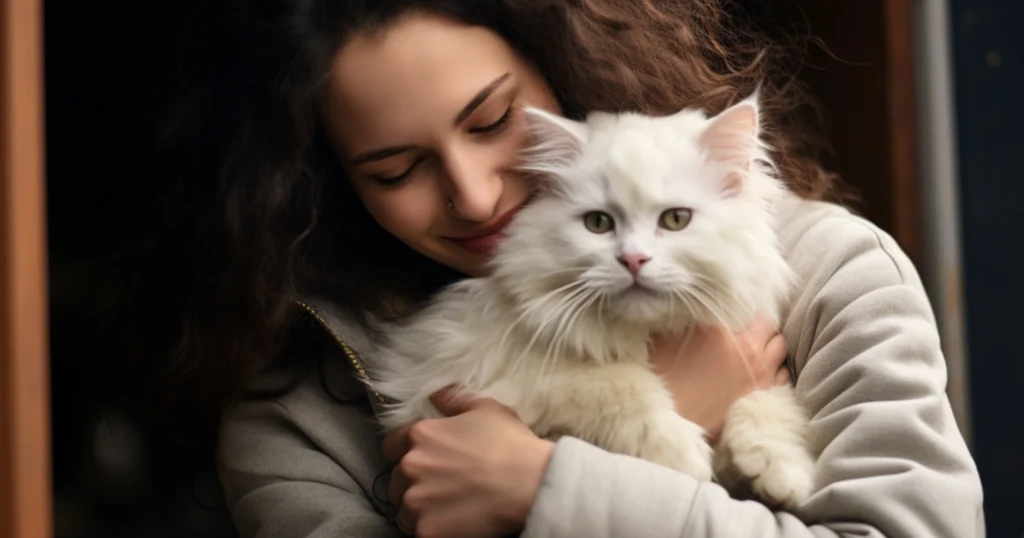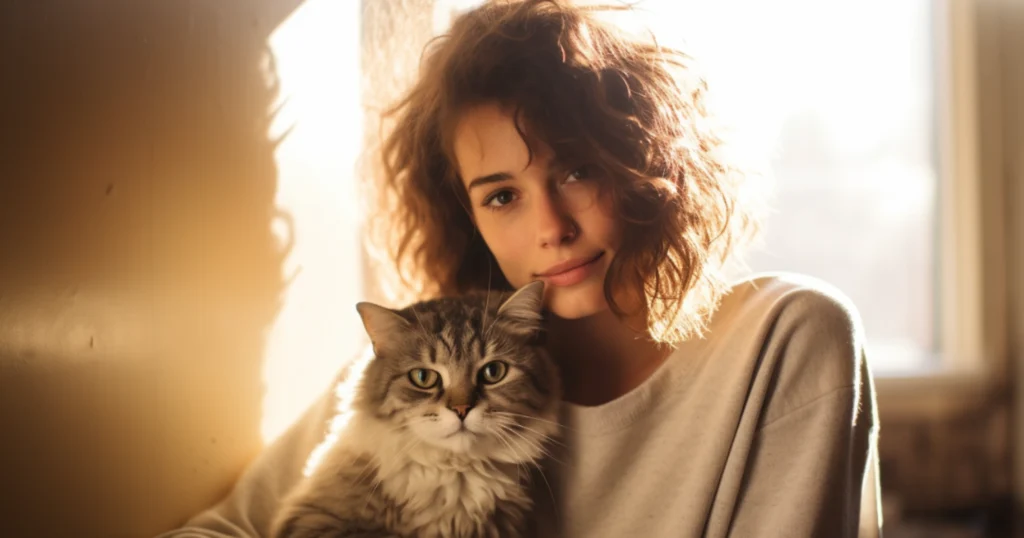If you’ve ever owned a cat or spent time around one, you’re likely aware that each feline friend has a unique personality. Just as some people are extroverts, some cats love being the center of attention, lounging comfortably on a human’s lap. Others, however, are more aloof, preferring their independence to a cozy cuddle session.
In this article, we’ll delve into the world of feline behavior, contrasting lap cats with non-lap cats, exploring what influences these behaviors, and how you might encourage more lap time with your kitty. Grab a cup of tea (and maybe a cat!), and let’s get started on this fascinating journey of understanding our four-legged friends.
Understanding Feline Behavior: Lap Cats Vs Non-Lap Cats

If you think about it, cats are quite like us humans. They have their social circles, favorite lounging spots, and, most interestingly, their own unique ways of interacting with their surroundings. That’s right, kitties have social dynamics, too!
Some felines are the life of the party—always ready to jump onto your lap for a petting session. These are your typical lap cats. They love to lounge on their favorite human, purring contentedly as you stroke their fur. Lap cats are often very affectionate and have no qualms about showing their love publicly (or should we say, “purr-blicly”).
On the other end of the spectrum are the non-lap cats. These independent felines prefer to keep their distance, not because they don’t love you, but because their social nature is more reserved. They’ll happily watch the world go by from the top of the bookshelf or find a quiet corner for a nap. Instead of settling on your lap, they’ll display their affection in subtler ways, like brushing past your legs or purring from a distance.
Understanding the difference between lap cats and non-lap cats is essential to respect their individual personalities and foster a healthy human-cat relationship. Don’t worry, we’ll guide you through the journey.
Factors That Influence a Cat to Become a Lap Cat

Wondering what turns some kitties into dedicated lap cats while others prefer the solitary comfort of a quiet corner? Several factors come into play. Let’s take a closer look.
Breed
Certain breeds of cats are more likely to become lap cats due to their genetic predisposition. Birmans, with their striking blue eyes and silky coats, are known for their affectionate, gentle nature. Similarly, the curly-coated Devonshire Rexes are sociable and love being the center of attention. Maine Coons, despite their size, are friendly giants who relish cuddling. Last but not least, Persian cats, famous for their long fur and squashed faces, are often laid-back and fond of a good lap session.
Disposition
A cat’s natural disposition also plays a critical role in whether they’re a lap cat or not. Some kitties are naturally outgoing and sociable, while others are more reserved. Cats with a friendly, outgoing temperament are often more likely to enjoy spending time on their owner’s lap.
Socialization
The way a kitten is socialized can greatly influence whether they become a lap cat. Kittens that are gently handled and positively exposed to humans from an early age are more likely to be comfortable with close contact. This comfort can translate into a fondness for laps in their later years.
Trust
Trust is a huge factor when it comes to lap cats. Cats are sensitive creatures, and they need to feel secure before they’ll allow themselves to be so vulnerable. A cat who trusts its owner will be more likely to see their lap as a safe, comforting space.
Warmth
Finally, let’s not forget the allure of a cozy, warm lap! Cats are drawn to warmth, and a human lap offers a perfect, snug spot. This is why you might often find your kitty hopping onto your lap when you’re settled down with a hot drink or under a blanket. After all, who can resist a warm, cuddly nook?
Signs of Affection in Non-Lap Cats

Just because your feline friend isn’t a lap cat, it doesn’t mean they don’t have oodles of affection for you! Non-lap cats express their love in ways that are a bit more subtle but equally heartfelt.
Purring is a telltale sign of a happy, contented cat. Even if your kitty doesn’t jump onto your lap, a soft purr in your presence is a clear sign they’re feeling the love.
Headbutts and rubs are another way non-lap cats show affection. When your cat rubs their head or body against you, it’s their way of saying, “You’re part of my crew!”
Also, pay attention to their tail. A cat with an upright tail, especially one with a twitching tip, is broadcasting positive vibes your way.
Non-lap cats might even bring you ‘gifts’ – usually toys, or in the case of outdoor cats, an unfortunate small creature. This may not be our favorite way of receiving affection, but it’s a sign of their fondness nonetheless! Remember, every kitty expresses love in their unique way. Let’s celebrate their individuality!
How to Encourage a Cat to Become a Lap Cat

Fancy having your feline friend snuggle up on your lap? Let’s look at some strategies that can encourage lap cat behavior. Remember, every cat is unique, so what works for one might not work for another. Let’s keep it friendly, fun, and respectful.
Patience
Firstly, patience is key. Trying to force your cat onto your lap is likely to do more harm than good. Instead, give them the time and space to make the decision themselves. Your patience and understanding can go a long way in making them feel comfortable.
Positive Reinforcement
Positive reinforcement can be a game-changer. Reward your cat with treats, praise, or petting when they show interest in sitting on your lap. This helps create a positive association with lap time.
Creating a Comfortable Environment
Creating a comfortable environment is another effective strategy. Make your lap an inviting place with a soft blanket or a favorite toy. The idea is to make it irresistible to your furry friend.
Playtime
Never underestimate the power of playtime! A good play session can help your cat burn off excess energy and relax. Once they’re tired and calm, they might be more receptive to a cozy cuddle session on your lap.
Respecting Boundaries
Last but definitely not least, respect your cat’s boundaries. If they show signs of discomfort or resistance, it’s crucial to back off and give them some space. Respecting their boundaries will only make them trust you more.
Conclusion
In conclusion, feline behavior is as fascinating as it is diverse. Whether a cat becomes a lap cat or prefers to express their affection differently can depend on factors such as breed, disposition, early socialization, trust, and simple warmth. Remember, non-lap cats have their unique ways of showing love – from purring and rubbing to bringing you ‘gifts’. If you wish to encourage lap cat behavior, patience, positive reinforcement, a comfortable environment, playtime, and respecting boundaries can all play a role.
But above all, it’s crucial to embrace the unique quirks of your kitty. After all, their individuality is what makes our feline friends so incredibly special!


